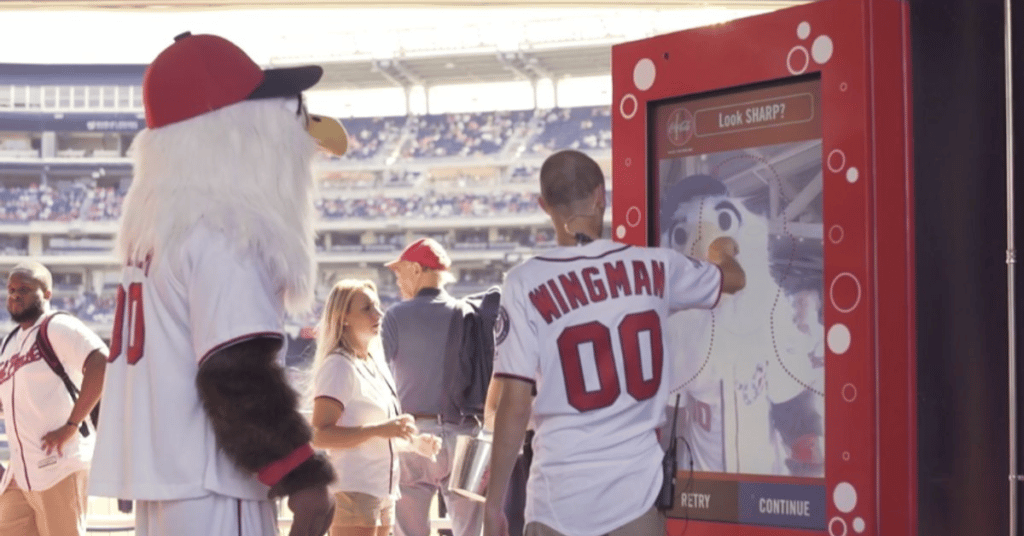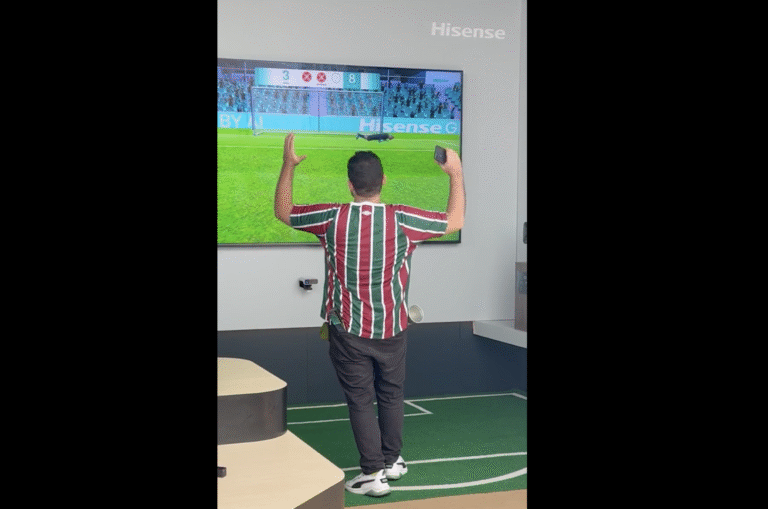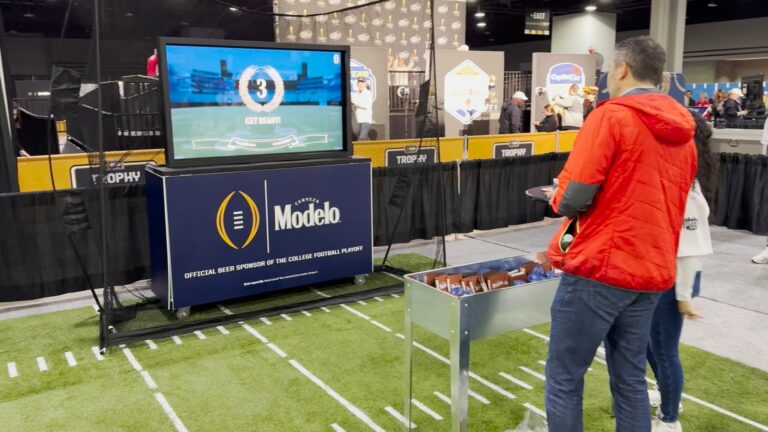The beverage giant is better engaging sports fans by working with partner MVP Interactive on digital activations that leverage AR/VR, facial recognition and more.
By Peter Adams, Senior Reporter
July 18, 2018
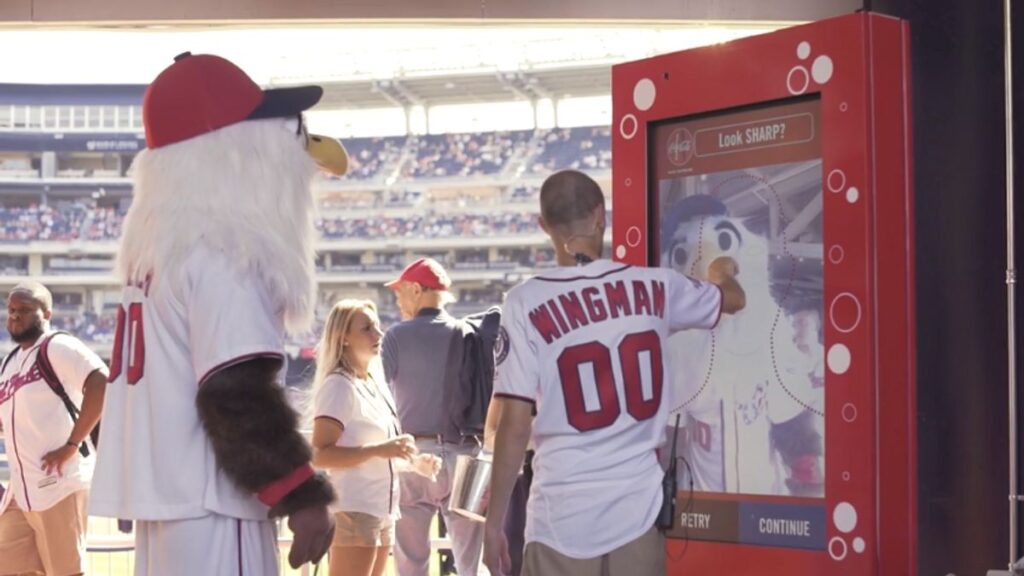
Ballparks and stadiums are staples of summertime activity for U.S. consumers, but for companies like Coca-Cola, which often tout their brands on in-venue Jumbotrons, signage and more, they’ve also become increasingly difficult fields to stand out in. That challenge arises as in-home entertainment systems and mobile technology become both more advanced and ubiquitous, ushering in a new era of consumer choice and obstacles for brands to overcome in terms of capturing attention.
“The reason why the fan experience is so important is because as ticket prices escalate and as there are so many competitive things that you can do on a weekend, it’s become kind of hard to compete with that in-home viewing occasion,” Dori Silverman, regional marketing director for Coca-Cola North America, said in a phone interview with Marketing Dive.
“It puts a lot of pressure on marketers to be able to distinguish why you should spend X dollars for a ticket because you really have to make that experience memorable and fun,” Silverman said.
In order to make its branded experiences more distinctive, Coke has over the past two years worked with partner MVP Interactive to integrate a more prominent technology component into its sports arena marketing by leveraging tools like augmented and virtual reality (AR/VR), facial recognition and mobile apps. These activations, which have manifested at stadiums like Washington DC’s Nationals Park and special events, like an MLB All-Star Week gathering co-branded with Budweiser, which Marketing Dive attended, have made for a winning strategy — not just for Coke, but also the marquee attractions.
“Teams are changing the way they sell their inventory and looking for these types of solutions,” Silverman said. “These experiences also help build the teams’ brands themselves.”
Finding the right fit
Digital technology is starting to transform out-of-home (OOH) advertising formats that have traditionally been largely static, such as billboards, signage and other placements often found in sports arenas. OOH advertising revenue rose 2% in Q1 2018 compared to the same period last year and accounted for $1.68 billion, according to data from the Outdoor Advertising Association of America, with digital cited as an important driver of that growth. Investments in AR/VR, along with facial recognition technology, are also poised to grow over the next several years.
James Giglio, the CEO and founder of MVP Interactive, believes marketers’ recognition of the value in more interactive in-venue experiences has been a long time coming. His company launched in 2012, but he’s only recently seen a ramp-up in brand interest.
“At the time, in 2012, there was a lot of ownership groups valuing in-venue experience and how important that was. Frankly, we didn’t see much action on it,” Giglio said.
The executive noted that he’s seen the philosophies his company was built on start to become a reality in recent years largely thanks to the help of brands like Coke, which first started working with the vendor in 2016. Their partnership was initially piloted with the Mets at Citi Field. It’s quickly expanded to include the Phillies, Dodgers, White Sox, Red Sox and more — positioning strengthened by Coke taking over for PepsiCo as the league-wide sponsor of the MLB last year, which Giglio noted was a pleasant surprise for his company. The two also extend their work to other sports beyond baseball, with teams like the Detroit Red Wings and Philadelphia Eagles.
That’s not to say that developing experiences for venues and teams is easy given some of the bleeding edge tech involved and who the target customers are. Pilot periods can be as short as a few weeks, Giglio said at the All-Star Week event at the Blind Whino, a colorful repurposed church nearby the Nationals Park in Southwest DC. Even starting the company required a considerable developmental period.
“Getting that minimal viable product, it took us a good whole part of eight to 12 months of doing business, of learning the sports business and learning how properties value certain inventory pieces,” Giglio said.
Tailoring the approach
Beyond the complexity of the technology involved, another hurdle Coke and MVP Interactive have to consider is what exactly their in-stadium experiences look like. Sports fans are defined by passion for their favorite teams, but that means a branded activation has to be properly tailored to the audience and region in order to resonate.
“What works at the Mets [stadium] doesn’t necessarily work everywhere else,” Coke’s Silverman said.
At the Nationals Stadium in DC, for example, Coke and MVP Interactive leverage facial recognition to create morphing stations that digitally transform the user into one of the four U.S. president mascots that famously race every game. For the Boston Red Sox, at Fenway Park, they deploy similar tech to create vintage-style baseball trading cards.
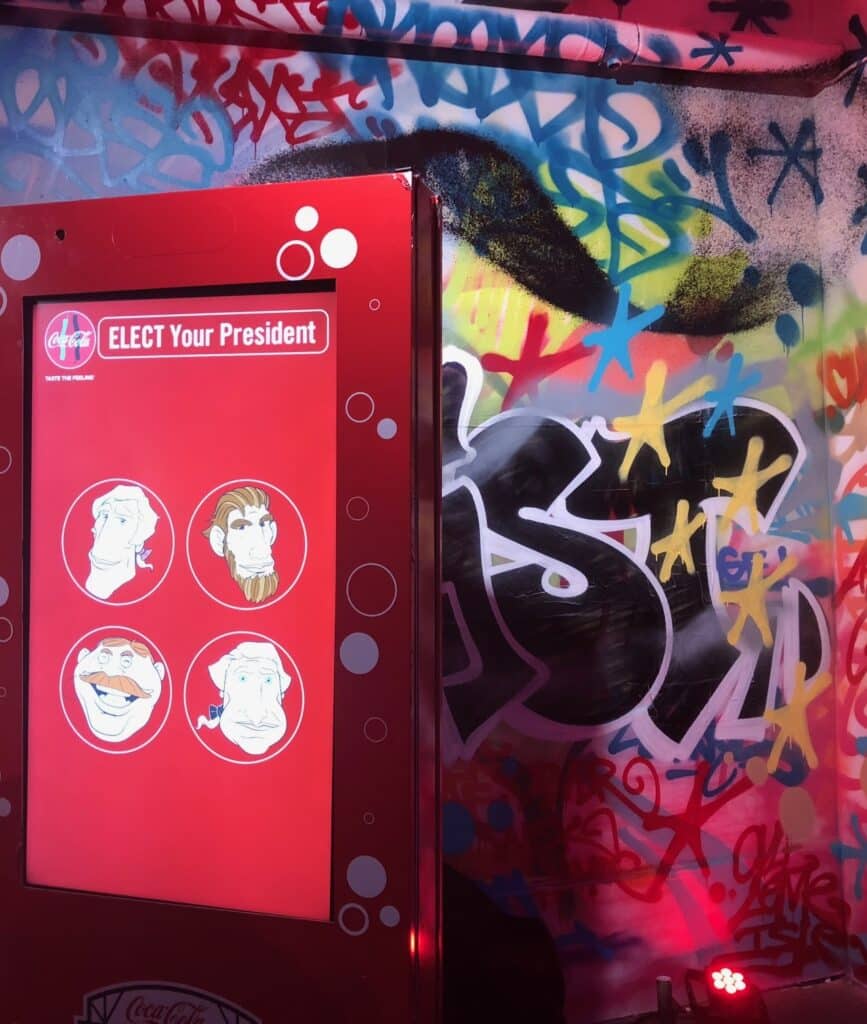
Peter Adams for Marketing Dive
A degree of personalization is important even for the types of activations that are available at multiple venues, such as bobblehead morphing stations.
“You can pick a pitcher, a catcher, a batter, you can choose your hairstyle, even as detailed as your skin tone, and then you take a selfie,” said Chloe Stewart, the creative activation manager at Coke. “Everybody’s all about selfie culture and sharing […] Snapchat culture is very relevant right now.”
While social media apps like Snapchat draw predominantly young audiences in the Gen Z and millennial sets, Coke looks to ensure its experiences aren’t barred off to any age group, including by providing physical tools like hashtag photo printers.
“If you’re a tech-savvy millennial, you may opt in for the digital takeaway,” Stewart said. “If you’re a more traditionalist, you may want a printout.”
Taking the experience home
Providing a takeaway that lives beyond the physical venue, whether that be a printout or a digital component, is increasingly important to Coke as the company looks to bolster its brand engagement with sports fans and create a more holistic customer experience across channels.
“We approach our partnerships from a fresh perspective year-over-year,” Stewart said. “A second iteration of something that was an in-venue experience was our bobblehead morphing machine, which turned into a mobile application for people to use on their iPhones or their Androids.”
“Amplification is very important,” Giglio added. “You need to still connect and resonate with a consumer outside of a one-on-one experience, it’s really important to extend that.”
And the means by which to extend a brand, especially through experiential marketing, are only multiplying as marketers’ interests in the format grow. While the hot item in 2017 was GIFs, according to Stewart, this year’s might be 360-degree matrix camera technology or gamification.
“Everybody’s got a second screen these days, and attention spans are getting shorter and shorter. You really only have a few seconds,” Stewart said. “Finding creative solutions to how fans are consuming content, whether that’s through augmented reality, or in-venue push notifications or leveraging video — those are the biggest trends.”

